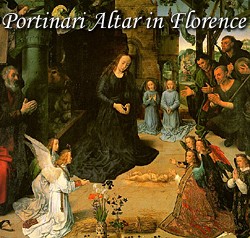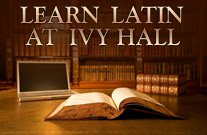
|

 |
“On Hugo van der Goes’ Portinari Altar in Florence” |
DATE: December 5, 2003
Time: 7:30 p.m. followed by a reception
Speaker: Mrs. Mary Elizabeth Podles, Former Curator of Renaissance Art, Walters Gallery
Topic: Reading a Renaissance Painting: Hugo van der Goes’ Portinari Altar in Florence”
Cost: $15/person and $5 for students with ID
|  |
|
The greatest Netherlandish painter of the second half of the 15th century, Hugo van der Goes lived in Bruxelles from ca. 1436 and 1482, the year of his death. He had numerous commissions from the town of Ghent for work of a temporary nature such as processional banners, and in 1475 he became dean of the painters' guild. In the same year he entered a priory near Brussels as a lay-brother, but he continued to paint and also to travel.
|
Mrs. Mary Elizabeth Podles is former curator of Renaissance and Baroque Art at the Walters Gallery in Baltimore. She holds her undergraduate degree from Wellesley College and graduate degree from Columbia University in Art History. Her additional professional positions include Sotheby’s, the Metropolitan Museum of Art and the National Gallery.
|
No paintings by Hugo are signed and his only securely documented work is his masterpiece, a triptych of the Nativity known as the Portinari Altarpiece (Uffizi, Florence, c.1475-76). This large triptych constitutes the basis for a reconstruction of the artist's entire oeuvre. It was painted in Bruges and was commissioned to the artist by Tommaso Portinari, an agent of the Medicean bank who resided in the city with his family The painting was intended for the high altar of Sant' Egidio, the church of Santa Maria Nuova founded in 1288 by the banker's ancestor Folco Portinari. Shipped from Bruges by sea, with the financial aid of the banker Niccolò di Giovanni Capponi, it arrived in Pisa by way of Sicily. The painting was then transported along the Arno and finally completed its tortuous journey at the Porta San Frediano in Florence on 28 May 1483. From here it was carried to its destination by sixteen strong porters under the surveillance of Meo di Tingo. In 1567 the triptych was dismembered. When the work arrived in Florence, it immediately caused a sensation among the people and attracted a considerable following among contemporary artists. The triptych had an enormous impact, noticeably influencing the art of manuscript illustration in the late fifteenth and early sixteenth centuries as well as illustrious representatives of Umbrian painting like Luca Signorelli. Images of the altarpiece are available at http://www.kfki.hu/~arthp/html/g/goes/portinar/index.html
|
|
|





